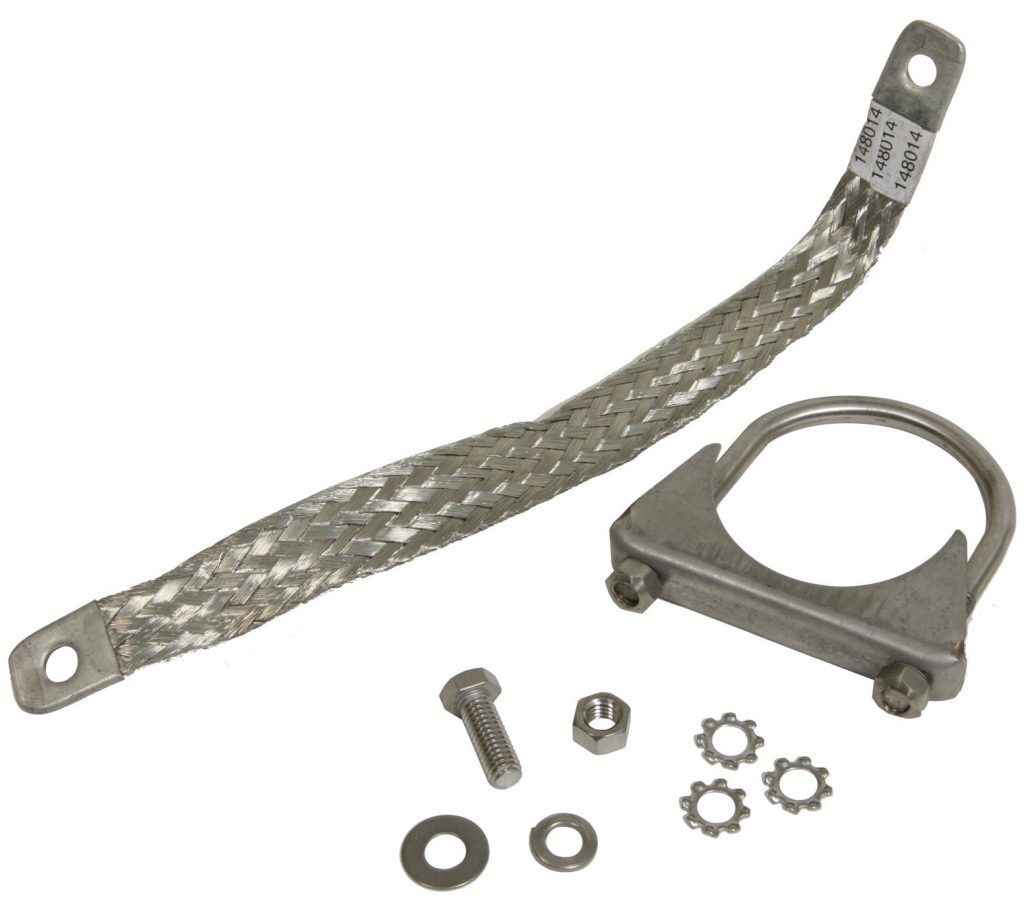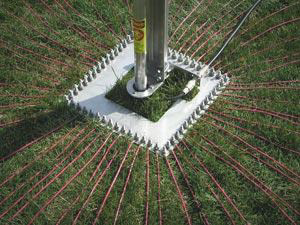When it comes to ham radio, there are grounds…and then there are grounds.
Here are three types we typically find with radio systems:
- Safety ground
- Lightning ground
- RF ground
Safety grounds protect you from a shock hazard. The ground wire in your AC wall outlet is connected to a grounding rod driven into the earth by way of the entry panel. This provides a low-resistance path to dissipate any fault current safely.
Lightning/surge protection grounding works by routing voltage surges and spikes away from protected electrical devices. Devices such as lightning arresters are often installed on feed lines entering your shack and will direct surges to a ground rod.
Understanding RF Ground
RF ground is not the same thing as an electrical or lightning ground. The term is a misnomer—it really isn’t a ground at all. You know the dipole antenna is a half-wave long—two quarter-wave sections. If you have a quarter wave vertical antenna, it’s a monopole, which is actually half of a dipole. The RF ground makes up the other half of the dipole—you can provide this second half by adding radials to the antenna, or just a single elevated counterpoise wire that’s about a quarter wave long.
In a typical HF mobile setup, the vehicle is capacitively coupled to the ground, so the antenna is a cross between a lopsided vertical dipole—the whip being one side and the car body on the other—and a vertical with an elevated radial system.
Mobile Radios
Mobile installations present significantly more challenges than simply adding radials to your yard. The other half of the dipole is a random vehicle, a large chunk of metal of various sizes and configurations serving as a moving ground plane for your vertical antenna. The ground plane provides for return currents to the antenna and is an integral part of the vehicle antenna circuit.
One way to think about a ground plane is that it acts as a “mirror” for the active vertical element. As long as a mirror is big enough, you’ll hear your reflected signal from a distance. It doesn’t really matter if the mirror is circular, rectangular, or square.
If the vehicle ground plane is lossy (which will happen to some extent), the performance of your antenna will suffer due to reduced current flow. Ground plane losses only add to existing losses from coil-loaded, physically shortened antennas typical of most mobile HF stations. It’s important to do what you can to minimize ground losses by improving the ground plane. Decreasing ground losses by just one ohm can make a significant increase in ERP (effective radiated power).
VHF/UHF mobile antennas have less ground losses if properly installed since their other half (vehicle ground plane) is sufficiently large for these frequencies
Bond, Frames Bond
Using the mirror analogy, a car is more like a collection of reflective tiles rather than a one-piece rectangular mirror hanging on the wall. Making the car work as a good signal reflector requires bonding.
Bonding is making low-impedance connections among the various conductive parts of your vehicle. The low impedance part is in the form of a conductive strap, such as a tinned braid, that is solidly attached between frame and body parts of the vehicle. Remember, the goal is to electrically join these surfaces into a single massive ground plane under the antenna and to improve the conductivity at RF frequencies. For larger gaps, one-inch-wide braid is a better solution, but keep it as short as possible. This helps it provide a low impedance connection.
For example, by using tinned braid you can electrically bond your exhaust pipe to the vehicle frame at several points along its length. Attach the braid to the pipe using ring clamps, screws with star washers, and soldered ring connectors to make a good connection to the car body or frame.
DX Engineering has a complete kit for exhaust bonding (below).

Tinned braid is also suitable for bonding hood and trunk lids as well for enhanced ground plane performance. The hinges of trunks and hoods may not provide sufficient electrical connectivity for an effective ground plane. On pickup trucks, you can improve the ground plane by bonding its bed to the cab with braid beneath the truck using existing bolts and connection points.
Important! When installing your antenna, be sure that the antenna mount provides solid continuity between the antenna ground side/coaxial shield and your newly bonded ground plane. Permanently mounted antennas using bolts and washers are usually best for electrical continuity, as long as they are mounted to a portion of the vehicle that’s part of the overall ground plane.
Using magnetic-mounted HF antennas will often result in poor grounding continuity for the antenna. At the very least, provide an additional ground braid for mag-mounts. Also, install your antenna as high as possible on the vehicle, with as much metal under the antenna as possible.
When improving a ground system, the main benefit by far is for transmitting. However, an improved ground plane with reduced losses helps to boost the received signal strength, thus improving the signal-to-noise ratio in your receiver.
Down to Earth
Moving from a rolling to a stationary RF ground plane, does efficiency increase or decrease with the number of wire radials?
Hams usually agree more radials on the ground are better, and it’s better to have more short radials than a few long ones. There has been a lot of debate about the extent of a radial system that might be needed. Based on a 1937 study, the FCC has suggested that a radial system consisting of 120 radials, each around 0.5 wavelengths long, would make an almost perfect ground system providing near 0 dB power loss at a low angle of radiation and a feed impedance of 35 ohms. It became the magic number for radial systems. However, such a radial system is impractical for most of us, especially on 80 and 160 meters.

Sometimes you have to make a size compromise. The ARRL Antenna Handbook provides some figures for alternative configurations:
- 16 radials of 0.1 λ gives a feed impedance of 52 Ω and a power loss of 3 dB
- 36 radials of 0.15 λ gives a feed impedance of 43 Ω and a power loss of 1.5 dB
- 60 radials of 0.2 λ gives a feed impedance of 40 Ω and a power loss of 1 dB
As we move toward 60 radials, diminishing returns kick in and the improvement gets progressively smaller. You’ll need to consider the cost of wire and the effort involved when deciding how far you’ll go.
There are other factors to consider, including local earth conductivity. The better the earth’s conductivity in a given region, the better the earth connection will be. It’s difficult to get a sufficiently good antenna RF ground plane on a rocky base. However, areas with moist soil provide a much better ground system. One of the best environments for a good ground connection is a salt marsh. This 1975 FCC Ground Conductivity map provides information about conductivity by region throughout the U.S.
There have been long-running discussions about the effectiveness of a vertical with an elevated ground system compared to one using a large number of radials on the ground surface. NEC modeling has shown that an antenna with four elevated λ/4-radials under ideal conditions would be as efficient as one with 60 or more λ/4 ground-based radials. In reality, you’ll probably need a few more than four.
The Ground That Isn’t Grounded
It acts as a reflector. It doesn’t radiate RF energy; it mirrors and reflects the energy. It also has a second purpose of providing the return path for RF current in unbalanced antennas.
No ground rod is involved, just lots of metal directly under a vertical antenna.

